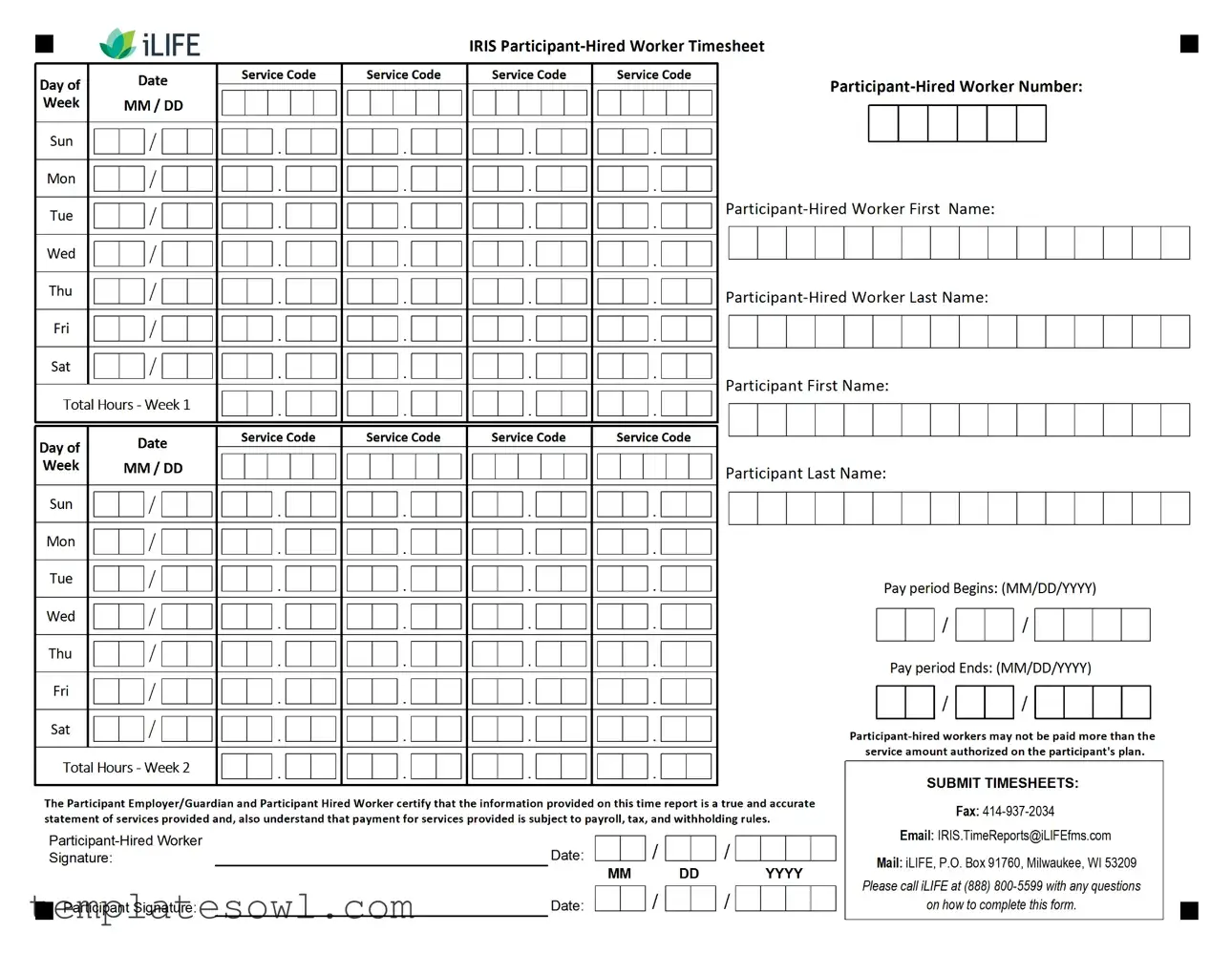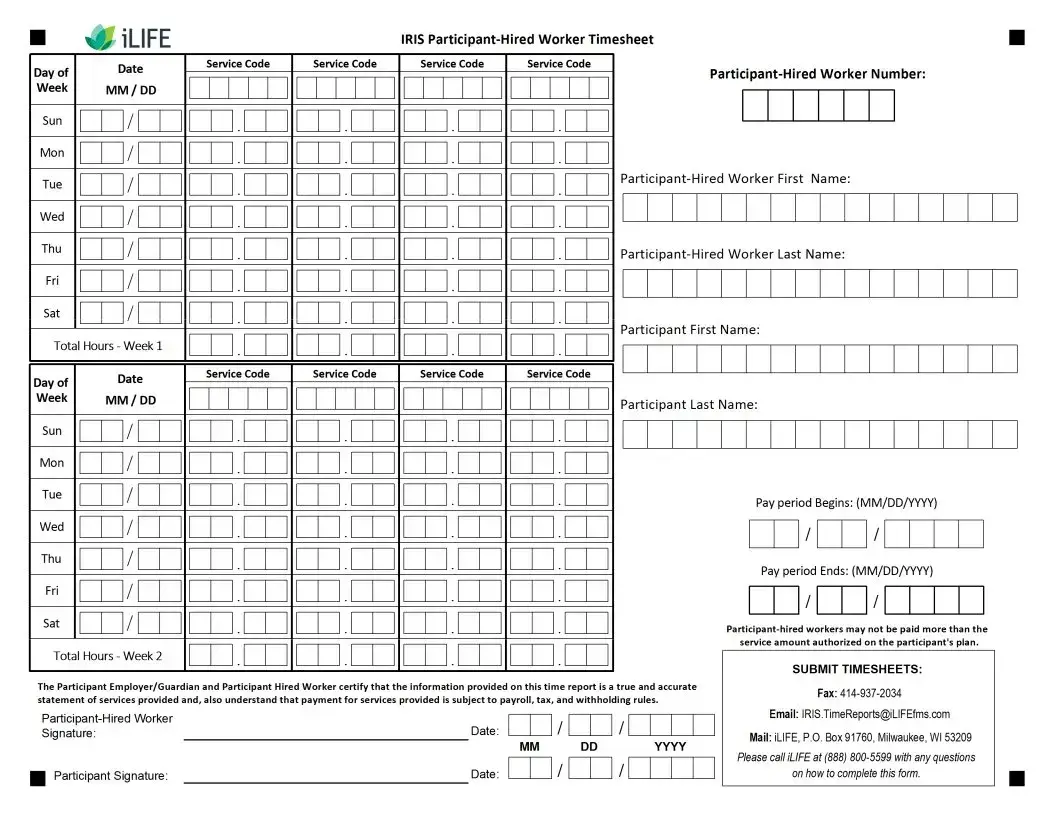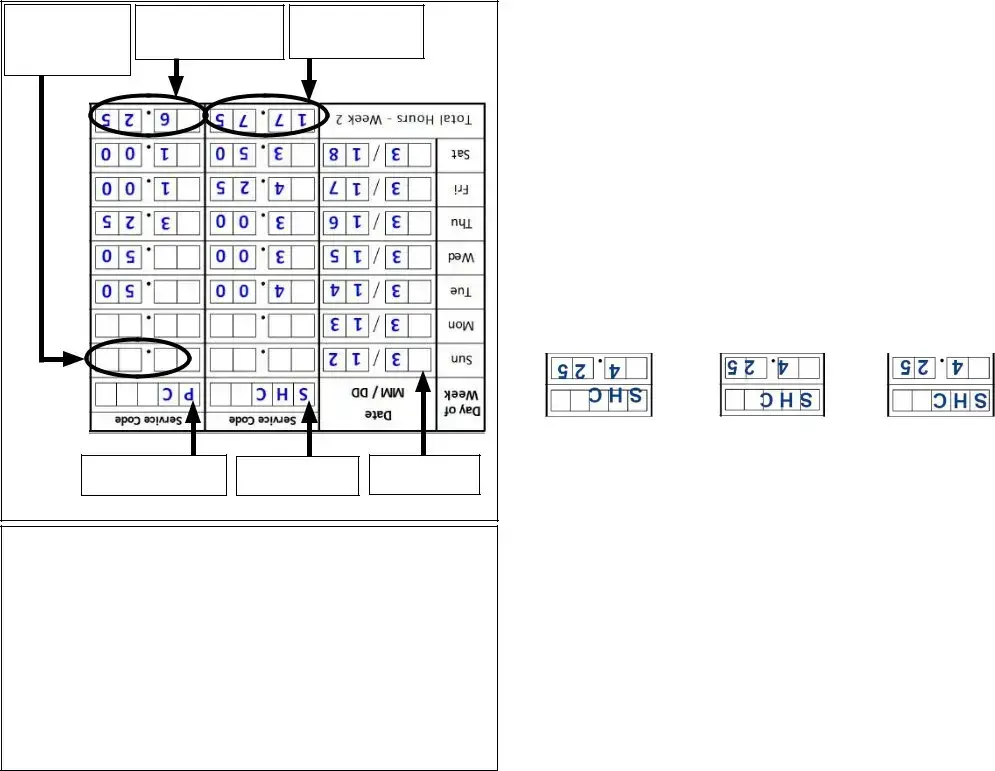Filling out the Iris Worker Timesheet form can be straightforward, but many make common mistakes. One of the most frequent errors is neglecting to enter each day's date accurately in the designated column. Without precise dates, tracking worked hours becomes problematic, leading to potential payment delays.
Another mistake occurs when workers attempt to use pencil for writing their timesheets. The form requires that entries be made in blue or black ink. Using pencil undermines the clarity and permanence of the entries, which could result in the timesheet being rejected.
People often forget to fill out all the requested information. Each section of the form demands specific details, such as the total hours worked and the corresponding service codes. Omitting any of this information can delay the payment process, as incomplete forms usually require follow-up actions.
It's essential to mark the correct service codes in the appropriate columns. Workers sometimes write service codes incorrectly, leading to confusion about what services were provided. This mistake can complicate records and is likely to slow down payment processing.
Dates on the timesheet should reflect the actual worked days. Some individuals submit timesheets with dates that do not match the work period. This inconsistency makes it difficult to verify hours and can lead to disputes over unpaid wages.
Both the participant and the hired worker must sign the timesheet. Failing to provide these signatures is a frequent oversight. Without both signatures, the timesheet is considered invalid, and payment is not guaranteed.
Another common error is exceeding authorized work hours. People sometimes fail to consult guidelines, overreporting hours that weren't actually worked. This overstatement not only violates policies but can lead to disciplinary actions and a loss of trust.
Finally, many employees forget to review the payroll schedule. Submitting timesheets after the indicated due date can cause significant delays. Adhering to this schedule is crucial for ensuring timely payment. Keeping track of due dates helps avoid the chaos associated with late submissions.


